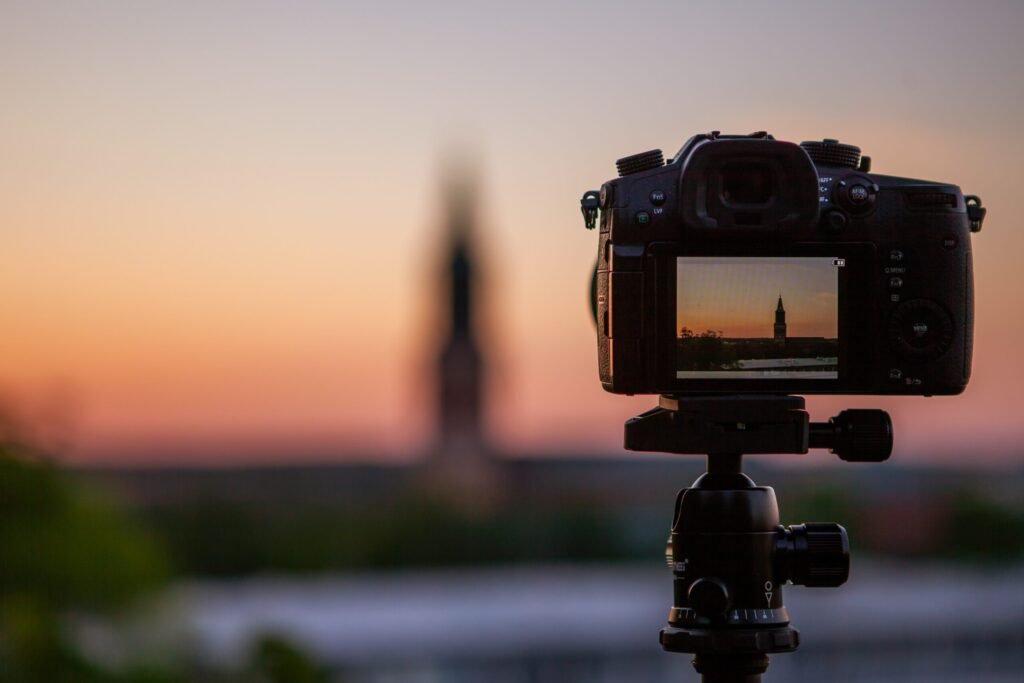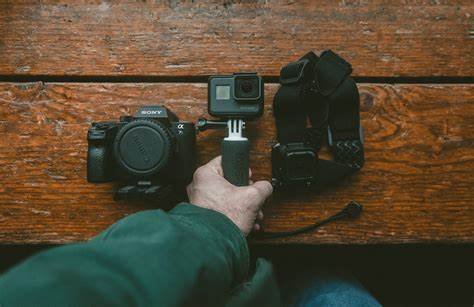Starting in videography can feel overwhelming. To help, here’s a guide to essential videography equipment for beginners. This list covers the basics you need to create high-quality videos.

1. Camera
The camera is the cornerstone of videography. Beginners should start with a DSLR or mirrorless camera. These cameras offer high-quality video and flexibility. Look for a camera with manual controls, as it allows you to adjust settings like aperture and shutter speed. Additionally, a camera with good autofocus is beneficial for capturing sharp, clear footage.
2. Lenses
Lenses can significantly impact your video’s look. A standard zoom lens (e.g., 24-70mm) is versatile and useful for various shots. For more creative shots, consider a prime lens with a wide aperture (e.g., 50mm f/1.8). Wide-angle lenses are great for capturing more of the scene, while telephoto lenses are ideal for close-ups from a distance.
3. Tripod
A tripod provides stability and smooth shots. Beginners should invest in a sturdy tripod with adjustable height and angles. A tripod with a fluid head is especially useful for smooth panning and tilting. Stability is crucial for professional-looking videos, so avoid shaky or hand-held shots when possible.
4. Microphone
Audio quality is as important as video quality. Built-in camera microphones often lack clarity. Therefore, invest in an external microphone for better sound. Lavalier microphones are ideal for interviews, while shotgun microphones are perfect for capturing directional sound. Consider a shotgun mic for more versatile use.
5. Lighting
Good lighting is essential for high-quality videos. Natural light is great, but it can be inconsistent. Invest in a basic lighting kit that includes softbox or LED lights. These lights help eliminate shadows and ensure even lighting. For more control, use reflectors and diffusers to modify light sources.
6. Gimbal or Stabilizer
For smooth, cinematic shots, use a gimbal or stabilizer. These tools help eliminate camera shake while moving. A gimbal is particularly useful for dynamic shots or when filming while walking. Stabilizers come in various sizes and price ranges, so choose one that fits your needs and budget.
7. Extra Batteries and Memory Cards
Running out of power or storage during a shoot can be frustrating. Always carry extra batteries and memory cards. High-capacity SD cards (e.g., 64GB or 128GB) are recommended to avoid frequent card changes. Having multiple batteries ensures you don’t miss important moments due to a dead battery.
8. Camera Bag
A camera bag protects your equipment and makes it easy to carry. Choose a bag with compartments for your camera, lenses, and accessories. A well-organized bag helps you access your gear quickly and keeps everything safe during transport.
9. Editing Software
Once you’ve captured your footage, editing is the next step. Beginners should start with user-friendly software like Adobe Premiere Pro or Final Cut Pro. These programs offer a range of tools for editing, color correction, and adding effects. Learn basic editing techniques to enhance your videos.
10. External Hard Drive
An external hard drive provides additional storage and backups for your footage. Video files can be large, so having ample storage is crucial. Regularly back up your projects to prevent data loss and keep your computer’s hard drive from getting full.
Investing in the right equipment can make a significant difference in your videography journey. Start with these essentials and gradually expand your gear as you gain experience. With the right tools, you’ll be well on your way to creating professional-quality videos.










